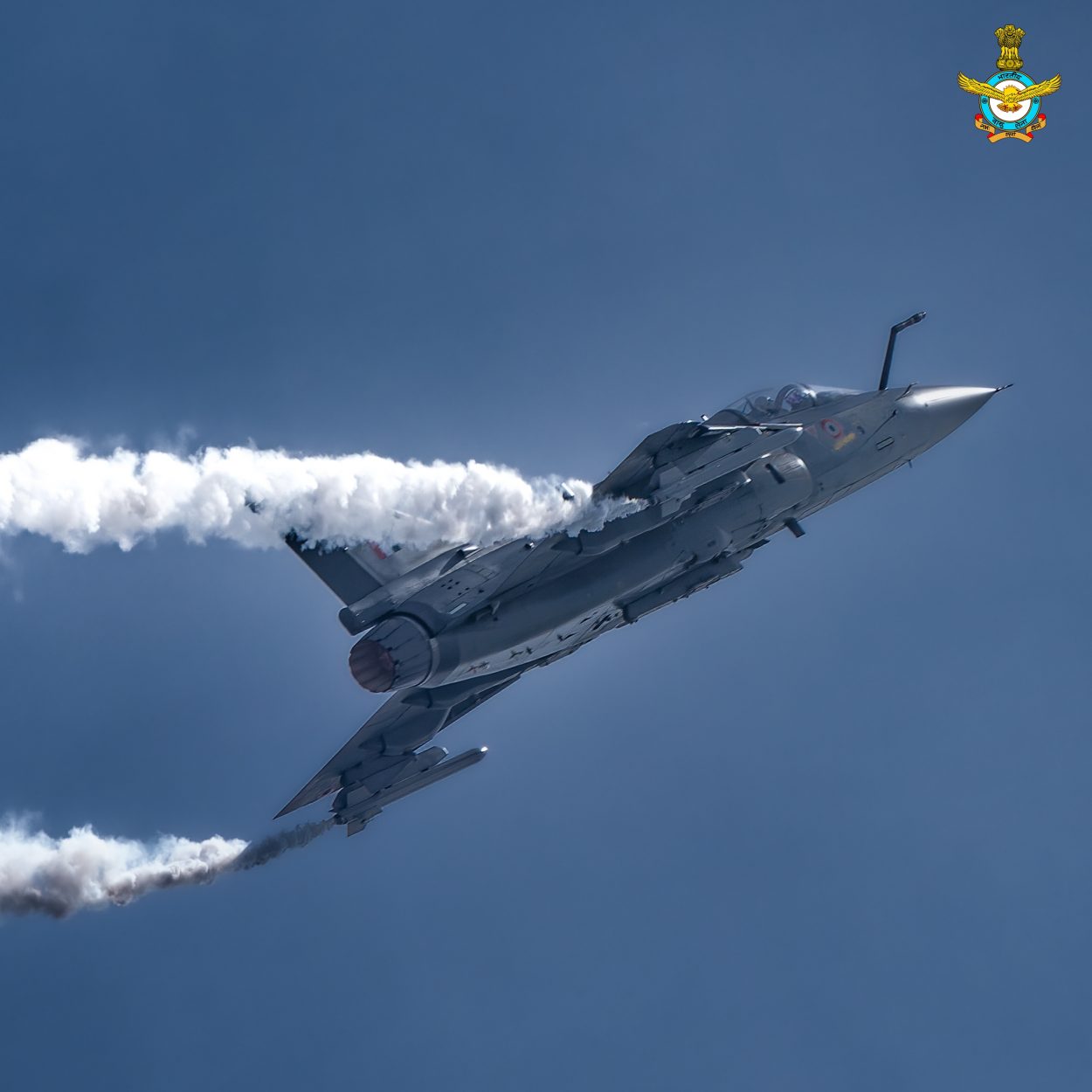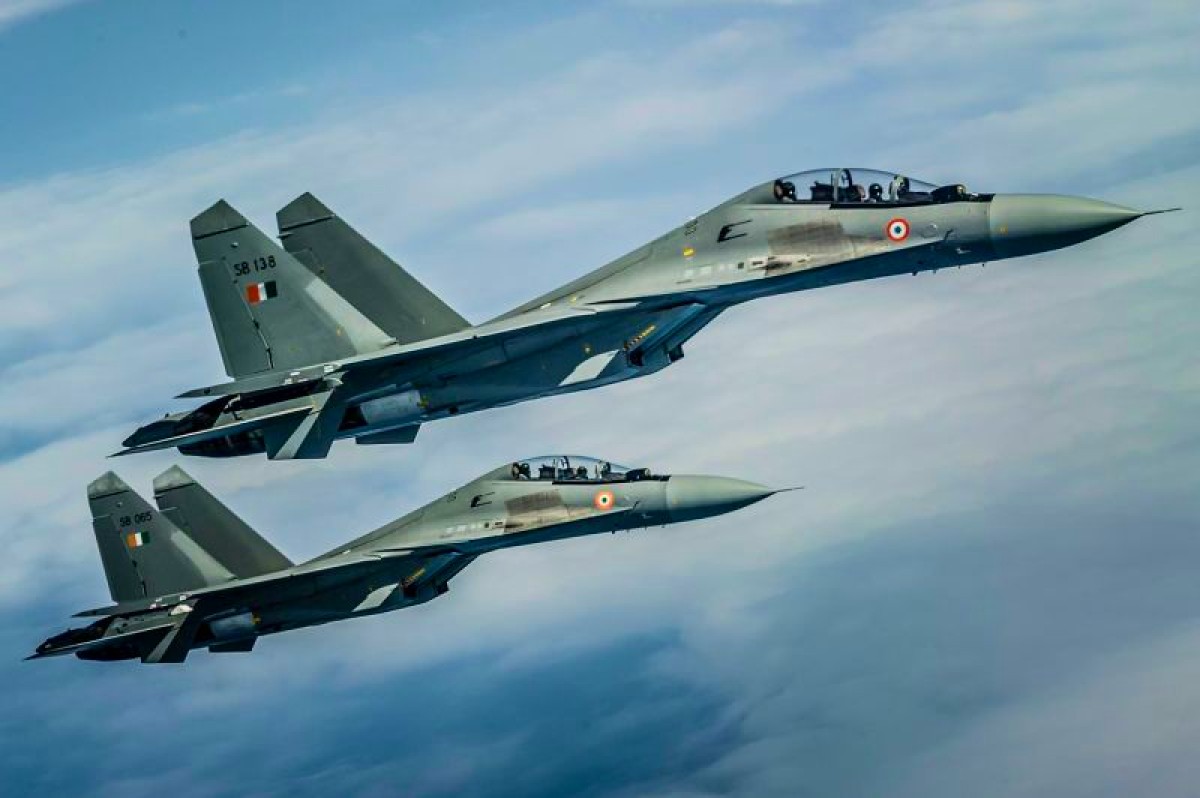Of the three services, the Indian Air Force “would be the one most heavily committed to ‘swing operations’ between fronts in the Northern Sector (bordering China) if needed,” says Indian Chief of Air Staff (CAS) Air Chief Marshal Vivek Ram Chaudhari.
On the occasion of the IAF Day on October 8 (IAF marked 90 Years this year), the CAS told this author how the Indian Air Force has evolved from being a tactical force to a strategic force today.
“The transition of the Indian Air Force from having been a tactical force to a strategic one is a natural progression that is a product of the overall growth of the country. Our threat landscape has also evolved with the growth of the country.
Today we are seeing increasingly collusive potential scenarios take shape, which adds a new dimension to the problem. Of the three services, the IAF would be the one most heavily committed to ‘swing operations’ between fronts in the Northern Sector if needed.
We have evolved specific plans for such contingencies and optimized our posture accordingly. Inductions of assets have been done with this in mind, and a time-bound plan for making good deficiencies has also been put in place.
The IAF, in keeping with national responsibilities, has also expanded its horizons and has devoted increasing attention to the protection of India’s territorial assets.”
He further added that now “the IAF needs to evolve into an Aerospace Force. This role derives naturally from air and space being one continuum with ‘air-related’ functions transforming seamlessly into ‘space-related’ ones.
This logic extends as well to situational awareness as it does to defend against any inbound threats. Therefore, the IAF is equipping & training itself in a manner that it can adapt to space-related functions in a seamless manner. The areas where the IAF is developing its capabilities in space include Communications, Navigation, ISR & Space Surveillance Networks”.
On the question of how the Indian Air Force will be able to play its role fully when it has lesser active fighter squadrons than its authorized strength of squadrons, the Air Chief pointed out the following “options”:

- LCA(Light Combat Aircraft) – The first LCA Squadron was formed on 01 July 16. Till date, 16 x LCA have been delivered to IAF in IOC configuration. Additionally, 10 FOC aircraft have been handed over to the IAF, and four more have been signaled out. HAL has also proposed to deliver the remaining FOC aircraft and four IOC twin-seater aircraft in FY 2022-23. The IAF is also procuring 83 LCA Mk 1A, for which a contract has been signed with HAL on 25 Jan 21. Deliveries are envisaged to start from Jan 2024. Additionally, PSQRs have been handed over to ADA for LCA MK 2 D&D. Induction of LCA Mk 2 is likely to commence from 2030 onwards.
- AMCA (Advanced Medium Combat Aircraft) – DRDO is working towards the indigenous development of a fifth-generation fighter aircraft program called the Advanced Medium Combat Aircraft (AMCA), and IAF is providing active support to DRDO towards the same. Induction of the AMCA is likely to commence 2035 onwards.
- MRFA (Medium Range Fighter Aircraft) – IAF plans to induct six squadrons of MRFA in a phased manner. The program would be progressed under the ‘Make in India’ initiative of DAP-2020, focusing on a substantial transfer of key technologies to an Indian Production Partner. The case is currently under progress.
On the vexed question of India having integrated theatre commands, an idea floated by the late Chief of Defense Staff Bipin Rawat, on which there is said to be the concurrence of Prime Minister Narendra Modi, the CAS said, “The deliberations are on, and we have covered a lot of ground on this aspect. We are sanguine that with such detailed discussions and nuanced views, the final solution would be best for this country that would enable a ‘Whole of Nation’ approach, leveraging all elements of Comprehensive national Power towards National security and interests”.
It may be noted here that the Indian Air Force has serious reservations over the division of its assets among the proposed theater commands. Air Chief Marshal Chaudhari has also pondered over how the theatre commands will reconcile with the IAF’s well-known air –doctrine.
Apart from the platforms, how does he look at both the level of technological prowess and the caliber of the human resources (including fighter pilots in the face of the rising air accidents), and what is the lesson?
To this question, the CAS answered, “Firstly, I would like to clarify that air accidents in IAF are not on the rise. Historical data shows that the Indian Air Force has been able to continuously bring down its rate of accidents and our endeavor is to bring the rate down even further”.
Is the Indian Air Force drawing any lesson from the ongoing Ukraine war? The Air Chief answered, “Indian Air Force is closely monitoring the situation there and examining the lessons arising out of this conflict. The Indian threat scenario and the manner in which wars may be fought in the sub-continent are very different from what is happening between Russia and Ukraine.
“Nevertheless, review of our capabilities, be they technological or human resources related, is an ongoing process, and relevant changes are brought about as the need is identified.
“We are absolutely confident about the capabilities of all our air warriors, and each one of them is fully capable of withstanding any challenge that they may be confronted with and successfully accomplishing their missions.

“As a technology-intensive force, the Indian Air Force has always been cognizant of the need for its personnel to have the requisite degree of technological prowess. This finds appropriate attention in our pattern of training.
‘Air Accidents’ in peacetime cannot be conflated with losses in wartime, as in Ukraine. The only internationally acceptable metric for measuring accident rates in military aviation is the number of accidents per every 10,000 hours of flying. On that scale, the IAF has performed very well, and there has been a reduction in the accident rate”.
The Air Chief also talked about the IAF’s unavoidable linkages with society at large, particularly the uproars over “the Agnipath scheme” (temporary recruitment of the young at the “Jawan” level for four years.
“I have always maintained that the initial unfavorable reaction to the Agnipath scheme in certain quarters was motivated to a large extent and out of ignorance in a few cases. The fact that there was an overwhelming response to the IAF notification for batch 01/2022 amply demonstrates the trust that Indian youth hasinn the IAF and defense forces as a whole.
“The wholehearted response to the Agnipath scheme is not an exception. In every recruitment cycle, be it for the officers or PBORs, the response has been similar. We have many cases of youth repeatedly attempting to join the IAF. And this happens because society at large gets positive feedback from those in blue uniform that the IAF offers an excellent way of life.
The IAF is not isolated from society, and neither it wishes to be isolated. While the recruits are a reflection of the society they come from, the IAF veterans who retire on superannuation are a reflection of what IAF can give back to society”.
“The IAF has very robust policies that give equal opportunities to every individual. We also endeavor to recruit people from the entire country without any distinction. We have a well-established online entrance examination conducted on an All India Basis,” he said.
- Author and veteran journalist Prakash Nanda has been commenting on politics, foreign policy on strategic affairs for nearly three decades. A former National Fellow of the Indian Council for Historical Research and recipient of the Seoul Peace Prize Scholarship, he is also a Distinguished Fellow at the Institute of Peace and Conflict Studies. CONTACT: prakash.nanda@hotmail.com
- Follow EurAsian Times on Google News




